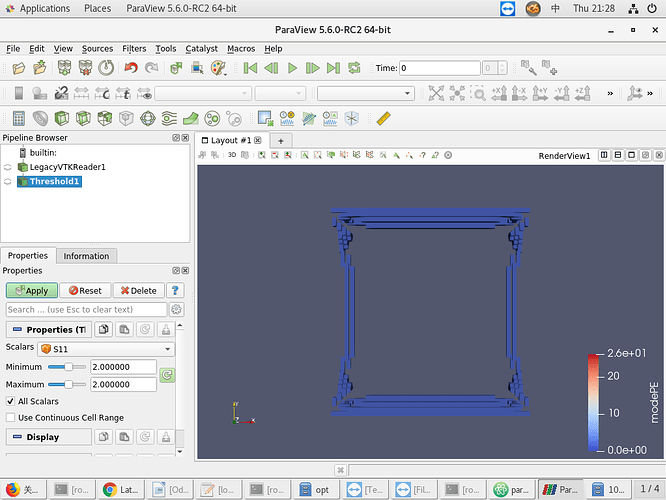

PVEE significantly contributed to the development of ParaView's client/server architecture. This project was funded by Phase I and II SBIRs from the US Army Research Laboratory and eventually became the ParaView Enterprise Edition. Independent of ParaView, Kitware developed a web-based visualization system in December 2001.

The first public release was announced in October 2002. and Los Alamos National Laboratory through funding provided by the US Department of Energy ASCI Views program. The ParaView project started in 2000 as a collaborative effort between Kitware, Inc. Develop an extensible architecture based on open standards.Create an open, flexible, and intuitive user interface.Support distributed computation models to process large data sets.Develop an open-source, multi-platform visualization application.The goals of the ParaView team include the following: Under the hood, ParaView uses Visualization Toolkit (VTK) as the data processing and rendering engine and has a user interface written using Qt. It has been successfully tested on Windows, macOS, Linux, IBM Blue Gene, Cray Xt3 and various Unix workstations, clusters and supercomputers. ParaView runs on distributed and shared memory parallel and single processor systems. This flexibility allows ParaView developers to quickly develop applications that have specific functionality for a specific problem domain.
#PARAVIEW SCRIPTING CODE#
The ParaView code base is designed in such a way that all of its components can be reused to quickly develop vertical applications. ParaView is an application framework as well as a turn-key application. It can be run on supercomputers to analyze datasets of terascale as well as on laptops for smaller data. ParaView was developed to analyze extremely large datasets using distributed memory computing resources. The data exploration can be done interactively in 3D or programmatically using ParaView's batch processing capabilities. It can be used to build visualizations to analyze data using qualitative and quantitative techniques. ParaView is known and used in many different communities to analyze and visualize scientific data sets. ParaView is an open-source, multi-platform data analysis and visualization application. It can also be run as a single-computer application. ParaView is an application designed for data parallelism on shared-memory or distributed-memory multicomputers and clusters. It is an application built on top of the Visualization Toolkit (VTK) libraries. It has a client–server architecture to facilitate remote visualization of datasets, and generates level of detail (LOD) models to maintain interactive frame rates for large datasets. ParaView is an open-source multiple-platform application for interactive, scientific visualization. Scientific visualization, Interactive visualization Then use that as your Seed Source.Īnother (probably better) option if your data is 2D or you can extract an interesting surface along the flow of your data is to use the Surface LIC plugin. One thing you might want to try is to compute the vorticity of your vector field ( Gradient Of Unstructured Data Set when turning on advanced option Compute Vorticity), find the magnitude of that ( Calculator), and then use the Threshold filter to pull out the cells with large vorticity. Thus, you are better off with trying to derive a data set that contains seed points that are likely to trace a stream through the vortices that you are interested in. You will get all those interesting streamlines through vortices, but they will be completely hidden by all the boring streamlines around them. Even worse, the result will be so dense that you won't be able to see anything. First of all, unless your data is trivially small, this will take a long time to compute and create a large amount of data. However, while you can do this, you will probably not be happy with the results. That will create a streamline originating from every point in your dataset, which is pretty much what you asked for. To add a little bit to Mathieu's answer, if you really want streamlines everywhere, then you can create a Stream Tracer With Custom Source (as Mathieu suggested) and set your data to both the Input and the Seed Source.


 0 kommentar(er)
0 kommentar(er)
